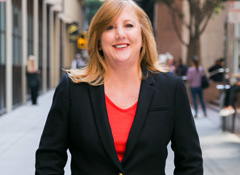60 Seconds with Bart Nash, LPP
Bart Nash, is head of communications and public affairs at the Local Pensions Partnership (LPP). The Local Pensions Partnership launched in April 2016 after the merger of the London Pension Fund Authority and Lancashire County Pensions Fund.
What is the communications challenge at the Local Pensions Partnership?
We’re a fairly new organisation formed by the merger of two Local Government pension funds. This has meant creating a profile from scratch, moving the narratives away from our parent funds and building a new communications function and way of working. It’s been a long year, but a satisfying one!
What’s unique about comms in the UK pensions industry?
There’s a lot boiling away under the surface that you don’t realise until you work in it. When people think pensions – and I was the same – they think of retirement. However, some of the largest infrastructure investors in the world are pension funds. One of the pillars behind the formation of the LPP was to create a fund that was of sufficient size to replicate that.
In 10 to 15 years’ time I can’t see why UK pension funds won’t be on the same level as those in Holland, Canada or Australia.
What, in 2016, have you been most proud of?
Probably our media profile. We launched in April with none and our last analysis saw a 49% share of industry voice including regular national press and 80% key message cut through.
What are your ambitions for LPP in 2017?
Continue to build our internal communications function, which includes building a new intranet, maintaining our current media profile and launching an industry thought-leadership campaign.
What aspect of communications interests you the most?
The inter-dependencies of strands/disciplines and managing those in order to create the best impact. It’s a natural feeling to silo and immerse oneself in a specific area, particularly in large corporates. For example, media, internal and public affairs teams can quite often get caught in the trap of giving lip service to each other’s areas in weekly, catch-up meetings, but don’t involve each other in the planning stages.
A strong story will interest all audiences, and if it can be reinforced across numerous mediums and channels, it’s much more effective.
The effectiveness of a well-structured and maintained ‘Comms Grid’ is often overlooked!





